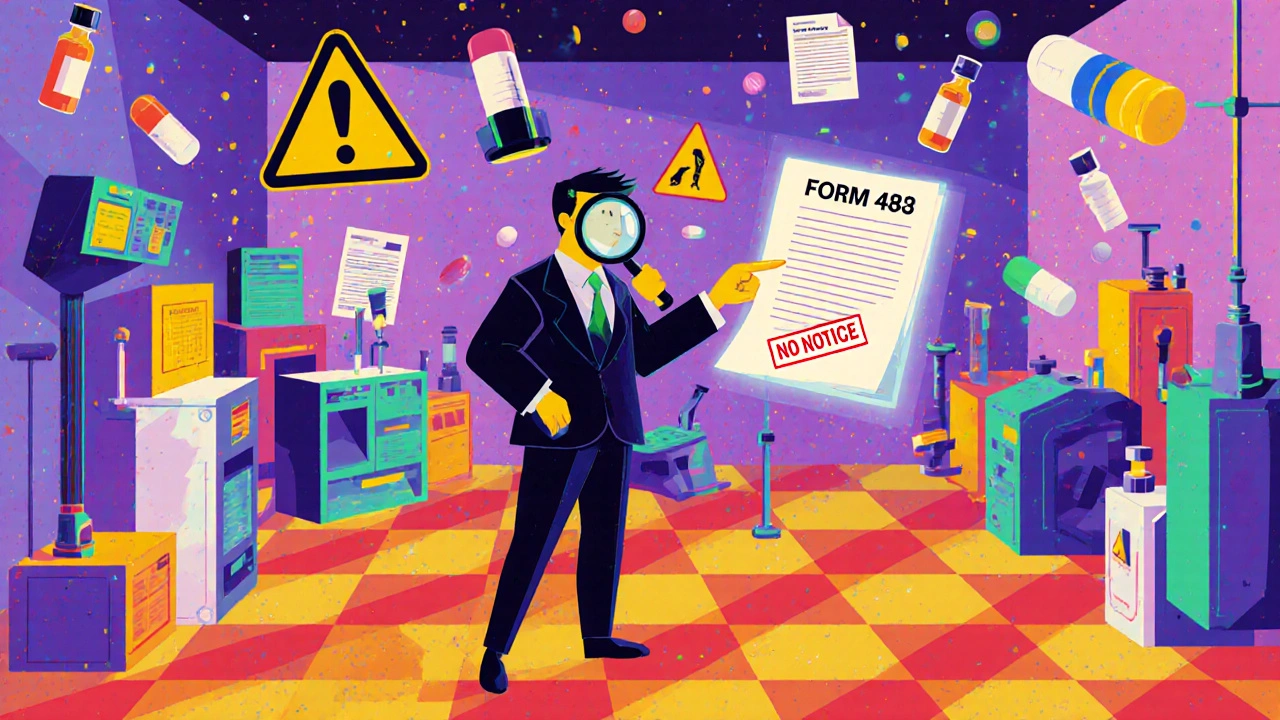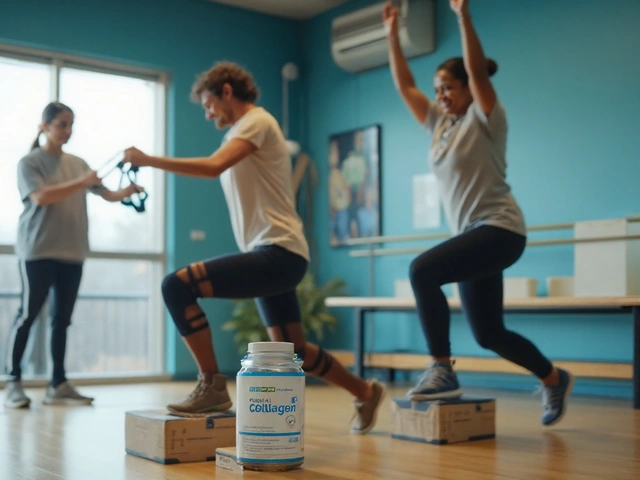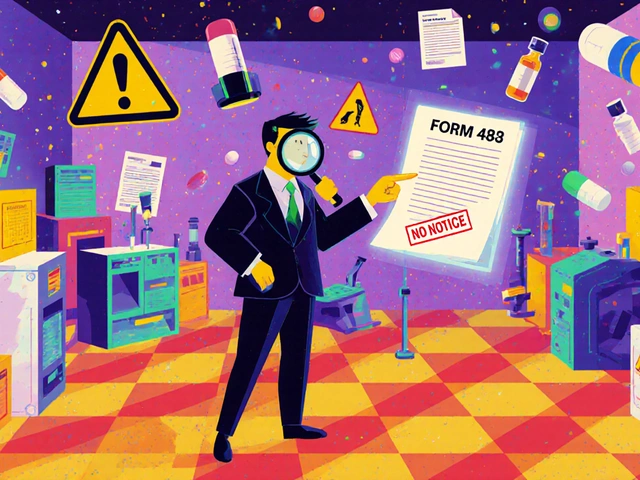The U.S. Food and Drug Administration doesn’t wait for problems to happen before acting. Instead, it shows up-unannounced or with a few days’ notice-to check if the places making your medicine, medical devices, and even some foods are actually following the rules. These FDA facility inspections are not audits in the traditional sense. They’re legal, on-site investigations that determine whether manufacturers are producing products that are safe, effective, and consistently made to quality standards. If you work in pharma, biotech, or medical device manufacturing, understanding how these inspections work isn’t optional-it’s survival.
Why the FDA Inspects Facilities at All
The FDA’s authority to inspect manufacturing sites comes from the Federal Food, Drug, and Cosmetic Act of 1938. That law gave the agency the power to step inside factories, review records, and demand proof that products meet federal standards. Since then, the scope has expanded dramatically. The 1962 Kefauver-Harris Amendments forced drugmakers to prove their products actually worked, not just claimed to. The 2012 Food Safety Modernization Act shifted the focus from reacting to contamination to preventing it. Today, inspections are the backbone of the FDA’s strategy: prevent harm before it reaches patients.The agency inspects around 12,000 domestic sites and 1,000 foreign ones each year. That’s not random. The FDA uses a risk-based model to decide who gets visited-and how often. A facility making insulin for diabetics? That’s high risk. A plant producing over-the-counter pain relievers? Still important, but lower risk. A company using a brand-new manufacturing technique? That triggers extra scrutiny. The FDA looks at three things: the product’s risk (how serious the condition it treats), the facility’s history (past violations, recalls), and the process risk (is this a complex biologic or a simple tablet?).
The Four Types of FDA Inspections
Not all inspections are the same. The FDA uses four distinct types, each with its own trigger and purpose:- Pre-approval inspections: These happen before a new drug or device gets approved. The FDA wants to see that the facility can consistently produce the product exactly as described in the application. This isn’t a formality-it’s a make-or-break step. If the inspection finds major issues, approval gets delayed or denied.
- Routine surveillance inspections: These are the most common. They’re scheduled based on risk. High-risk facilities get visited every 6 to 12 months. Lower-risk ones might go 3 to 5 years between visits. The goal? To catch problems early before they become recalls or public health threats.
- Compliance follow-up inspections: If a facility got a Form 483 after a previous inspection, the FDA will come back to see if the fixes were real. No paper fixes. No promises. They want proof-updated training logs, validated processes, corrected records.
- For-cause inspections: These happen when something goes wrong. A patient dies after using a device. A whistleblower calls in. A spike in adverse event reports. The FDA doesn’t wait for a schedule. They show up fast, sometimes with no notice at all.
What Happens During an Inspection
When the FDA investigator walks in, they’ll hand you FDA Form 482-the official Notice of Inspection. This isn’t a suggestion. It’s a legal requirement. You must cooperate. The inspector will be accompanied by a facility rep the whole time. No wandering off alone.The inspection usually lasts between 3 and 10 days. Here’s what they’re looking for:
- Facility tour: They’ll walk through every part of the production area-clean rooms, packaging lines, storage. They’re watching for cleanliness, proper labeling, segregation of materials, and whether equipment is maintained.
- Records review: This is where most failures happen. They’ll pull everything: batch records, deviation reports, equipment calibration logs, validation protocols, training records, change control documents. Everything must be complete, accurate, and contemporaneous.
- Staff interviews: They’ll talk to operators, quality control staff, supervisors. They’re not testing your knowledge-they’re testing consistency. If one person says the process is validated, and another says they’re not sure, that’s a red flag.
- Sample collection: Sometimes they’ll take samples of the product or raw materials to test independently. This is rare for routine inspections but common in for-cause cases.
At the end, they’ll give you FDA Form 483-a list of objectionable conditions. It’s not a citation. It’s a warning. But it’s serious. You have 15 working days to respond with a detailed corrective action plan. If you ignore it, the FDA can issue a warning letter, seize products, or even shut you down.

Top Reasons Facilities Fail Inspections
Based on thousands of inspection reports analyzed by industry experts, four issues account for nearly 80% of observations:- Inadequate deviation investigations (32%): When something goes wrong-like a batch fails testing-companies often rush to fix it without digging into why it happened. The FDA wants root cause analysis, not just a quick patch.
- Incomplete training records (24%): Every person who touches the product must be trained. And you must prove it. Signed forms, dates, topics covered-all of it. Missing even one signature can trigger an observation.
- Insufficient validation documentation (15%): You can’t just say a process works. You have to prove it. Validation isn’t a one-time event. It’s ongoing. Equipment, methods, cleaning procedures-all must be validated and revalidated.
- Poor change control records (7%): If you change a machine, a formula, or a supplier, you must document it. And you must assess how that change affects quality. Skipping this is a common mistake.
And here’s a growing problem: data integrity. The FDA now sees data integrity issues in 45% of observations-up from 28% in 2020. That means falsified records, backdated entries, deleted files, or unsecured computer systems. If your electronic records aren’t compliant with 21 CFR Part 11, you’re already behind.
How to Prepare and Survive an Inspection
You can’t fake readiness. But you can build it. Facilities with formal inspection readiness programs reduce observations by 63%, according to industry data. Here’s what works:- Assign one inspection coordinator: Don’t let multiple people field questions. One person manages the process, tracks requests, and ensures consistency. Facilities with a single point of contact report smoother inspections.
- Run quarterly mock inspections: Pretend the FDA is coming. Bring in an outside expert if you can. Force your team to answer questions under pressure. Find the gaps before the real inspectors do.
- Keep your facility diagram updated: If you moved a machine last month, update the floor plan within 7 days. Inspectors notice discrepancies immediately. It makes them question everything else.
- Set up an inspection support room: Have a dedicated space with printers, computers, phones, and organized documents. The faster you can hand over records, the less time the inspector spends waiting-and the less suspicious they become.
- Train your staff annually: Everyone who interacts with inspectors needs 8 hours of training. Principal investigators need 16. Only 63% of sites meet this standard. Don’t be one of them.
Also, don’t underestimate housekeeping. A dirty floor, cluttered shelves, or unmarked containers won’t get you a Form 483-but they’ll make inspectors think you don’t care about quality. Perception matters.

The Future of FDA Inspections
The FDA isn’t slowing down. In fact, it’s getting smarter. By 2026, the agency plans to use remote assessments for 35% of inspections-virtual tours and digital document reviews. Pilots in 2022-2023 showed these methods worked just as well as in-person visits for reviewing records.They’re also testing AI tools to scan documents for red flags-missing signatures, inconsistent dates, duplicated data. The first 12 pilot facilities will start testing this in late 2024. If it works, expect AI-assisted reviews to become standard.
Inspection frequency is shifting too. High-risk facilities-especially those making products for older adults-will see more visits. Low-risk dietary supplement makers may see fewer. The FDA is getting better at targeting resources where they matter most.
And the consequences are getting steeper. In 2023, the FDA issued 1,842 warning letters. Medical device makers got 42% of them. Pharma got 38%. That’s a 7% increase from the year before. Ignoring compliance isn’t an option anymore.
What Happens After the Inspection
Getting a Form 483 isn’t the end. It’s the beginning of your response. Your reply must be specific, timely, and backed by evidence. Saying “we’ll train staff” isn’t enough. You need to say: “We conducted training on April 5 for 12 staff members, documented in Training Log #2025-04-05, with competency assessments attached.”If you don’t respond-or if your response is weak-the FDA will send a warning letter. That goes public. Investors notice. Customers panic. You might get imported products detained at the border. Or worse-you could be barred from selling in the U.S.
But here’s the good news: most facilities recover. The FDA doesn’t want to shut you down. They want you to fix it. If you respond honestly, thoroughly, and quickly, you can turn a Form 483 into a roadmap for improvement.
Remember: inspections aren’t about catching you out. They’re about making sure your product is safe. If you build systems that are transparent, documented, and reliable, you won’t fear the inspection-you’ll welcome it as proof you’re doing it right.
How often does the FDA inspect manufacturing facilities?
The FDA inspects facilities based on risk. High-risk sites, like those making life-saving drugs or complex medical devices, may be inspected every 6 to 12 months. Lower-risk sites, such as those producing over-the-counter medications or dietary supplements, typically go 3 to 5 years between inspections. The agency uses a risk-based model that considers product type, facility history, and manufacturing complexity to determine inspection frequency.
What is an FDA Form 483?
An FDA Form 483 is a list of objectionable conditions observed during an inspection. It’s not a citation or a violation notice-it’s an official notice that the inspector found issues that could affect product quality or safety. Facilities must respond in writing within 15 working days with a corrective action plan. Failure to respond adequately can lead to a warning letter or further enforcement action.
Can the FDA inspect without warning?
Yes. While routine inspections usually provide 5 business days’ notice, the FDA can conduct "for-cause" inspections with no advance notice. These happen when there’s evidence of serious problems-like a spike in adverse events, whistleblower tips, or product recalls. Inspectors may show up unannounced to get an accurate picture of daily operations.
What documents does the FDA ask for during an inspection?
The FDA requests records that prove compliance with Current Good Manufacturing Practices (CGMP). This includes batch production and control records, deviation and non-conformance reports, equipment qualification logs, process validation protocols, training records, change control documentation, analytical method validation data, and environmental monitoring results. All records must be complete, accurate, and contemporaneously recorded.
How long must manufacturing records be kept?
Manufacturing records must be retained for at least two years after the product’s expiration date or after the product is discontinued, whichever is longer. For certain products, like those used in clinical trials or implanted devices, records may need to be kept for up to 30 years. Failure to maintain records for the required period is one of the most common reasons for FDA observations.
Are remote FDA inspections real?
Yes. The FDA began piloting remote inspections in 2022, using video tours and digital document reviews. By 2026, the agency plans to use remote assessments for 35% of inspections. These work well for reviewing records and procedures but are not yet used for physical facility assessments like equipment calibration or cleanliness checks. Remote inspections are faster and less disruptive, but they require strong digital record systems and secure file-sharing platforms.
What happens if a facility ignores an FDA Form 483?
Ignoring a Form 483 almost always leads to a warning letter from the FDA, which is publicly posted. This can damage your reputation, trigger import alerts, and result in product seizures or injunctions. In severe cases, the FDA may pursue criminal charges or permanently bar the facility from supplying products to the U.S. market. Prompt, thorough, and honest responses are critical to resolving issues and avoiding escalation.






Ogonna Igbo
November 14, 2025 AT 09:04The FDA thinks they own the world but they don't even know how to fix their own broken supply chains. They inspect factories like they're cops with a badge but the real problem is the US outsourcing everything to India and China then acting surprised when pills fall apart. You think they care about safety? Nah they care about control. They shut down small labs while Big Pharma gets a pass because it's all about power not pills. I've seen factories in Lagos that run cleaner than half the US plants they inspect. This isn't regulation it's imperialism wrapped in a lab coat.
BABA SABKA
November 14, 2025 AT 16:17Let me cut through the bureaucratic noise - CGMP isn't some mystical ritual, it's operational discipline. If your deviation logs are sloppy, your change control is an afterthought, and your training records look like they were scribbled during a coffee break - you're not just non-compliant, you're a liability. The FDA doesn't come to be nice. They come because someone's kid might get a contaminated vial. If your QA team can't produce a coherent audit trail in under 10 minutes, you're already dead in the water. Stop treating compliance like paperwork and start treating it like your license to exist.
Chris Bryan
November 15, 2025 AT 00:53They say 'risk-based inspections' but everyone knows it's a cover for corporate lobbying. Big Pharma pays for the inspectors' vacations. You think they inspect Pfizer plants the same way they hit some startup in Ohio? No way. And remote inspections? That's just the first step before they replace humans with AI that's programmed by the same contractors who wrote the software for the 2020 election. Data integrity? They're deleting records faster than we can find them. The real goal isn't safety - it's total control over who gets to make medicine. And if you're not on the list? You're not even allowed to breathe near a sterile room.
Jonathan Dobey
November 16, 2025 AT 00:51Here’s the existential truth no one wants to admit: the FDA doesn't inspect for safety - they inspect for narrative coherence. Every batch record, every validation protocol, every signed training log - these aren't documents, they're performative acts of faith in a system that no longer believes in itself. We've turned quality into theater. The inspector doesn't care if your machine is calibrated - they care if the spreadsheet says it was. The patient doesn't need a 30-page deviation report - they need a pill that doesn't dissolve into poison. We're not manufacturing medicine anymore. We're manufacturing stories. And the FDA? They're the editors who decide which stories get published. The rest? Burned in the archive of forgotten recalls.
ASHISH TURAN
November 16, 2025 AT 23:58Great breakdown. I work in pharma QA in Mumbai and this matches what we see daily. The key is not just following the rules but building a culture where everyone feels responsible. We do mock inspections every month and even the janitors know what a Form 483 is. It’s not about fear - it’s about pride in doing it right. The FDA isn’t the enemy. Complacency is. And yes, data integrity is the biggest silent killer - if your system allows backdating, you’ve already lost. Keep it simple. Keep it honest. That’s all they really want.
Ryan Airey
November 18, 2025 AT 15:17Let’s be real - 80% of Form 483s come from companies that treat compliance like a checklist they can skip on Fridays. Training logs with missing signatures? That’s not an oversight, that’s negligence. Deviation investigations that end with ‘human error’? That’s lazy. Validation that’s never re-run after a change? That’s fraud. And don’t get me started on the ‘we’ll fix it later’ culture. You don’t get to say ‘we’ll train them next quarter’ when someone’s liver is failing because your cleaning validation was a PowerPoint. The FDA is the only thing standing between you and manslaughter charges. Act like it.
Hollis Hollywood
November 18, 2025 AT 16:23I’ve sat in on a few of these inspections, and honestly, the hardest part isn’t the paperwork - it’s the silence. The way the inspector just stares at you while flipping through binders like they’re reading your soul. You can feel them thinking: ‘Is this person lying? Are they scared? Do they even care?’ It’s not about catching you out - it’s about seeing if you’ve built something real. The best facilities aren’t the ones with perfect records. They’re the ones where the people actually talk to each other. Where the operator who runs the mixer knows why the validation matters. Where the QA lead doesn’t just sign forms - they ask questions. That’s the difference between surviving an inspection and thriving after it.
Aidan McCord-Amasis
November 20, 2025 AT 08:17Form 483? More like Form 483: The Revenge of the Spreadsheet 🤖📄. Just fix your records. Stop overcomplicating it. Also, AI is coming for your job, not your factory. Chill. 😎
Adam Dille
November 21, 2025 AT 17:52Biggest takeaway? Clean floors matter. Not because the FDA cares about dust - but because if you can’t keep your space tidy, why should we trust you with a life-saving drug? I’ve seen plants with spotless records but greasy counters and unmarked bins. The inspector sees that and thinks: ‘If they don’t care about this, what else are they cutting corners on?’ It’s not about perfection - it’s about showing you take pride in your work. A little effort goes a long way. 🙌
Katie Baker
November 23, 2025 AT 04:17Love this post. Seriously. I used to panic every time we got an inspection notice - now I see it as feedback. We started doing mock inspections with our whole team and it changed everything. People stopped seeing QA as the ‘police’ and started seeing them as the team that helps us do better. And yeah - we fixed our training logs. Turns out, people actually like being trained when it’s not just a 10-minute PowerPoint. 😊
John Foster
November 23, 2025 AT 11:19The FDA’s entire inspection regime is a metaphysical exercise in institutionalized doubt. We have constructed a cathedral of documentation to atone for the sin of human fallibility - yet we have never asked whether the act of recording is itself a distortion of truth. Is a signed log more real than a spoken assurance? Is a validated protocol more valid than lived experience? The inspector, armed with Form 483, becomes a priest of bureaucracy, demanding sacrifice upon the altar of compliance. But what if the truth lies not in the paper, but in the intention? What if the real violation is not the missing signature, but the soul’s surrender to the machine? The FDA does not seek to protect patients - it seeks to protect itself from the chaos of uncertainty. And in doing so, it has turned medicine into a ritual, and the worker into a scribe.
Edward Ward
November 24, 2025 AT 05:44One thing everyone misses: the FDA doesn’t just inspect for compliance - they’re silently auditing your company’s culture. Every delayed response, every vague corrective action, every ‘we’ll get to it’ - it’s not just a paperwork failure, it’s a cultural failure. And here’s the kicker: the agency has been tracking response quality for years. They’ve built internal metrics on how detailed, timely, and evidence-based your replies are. The ones that get flagged for warning letters? They’re not the ones with the most observations - they’re the ones with the most flimsy, vague, or arrogant replies. So if you think you can BS your way out of a Form 483? You’re not just wrong - you’re predictable. And the FDA loves predictable failures. They’ve seen them a thousand times. Be the outlier. Be specific. Be humble. Be thorough. That’s how you turn a failure into a reputation.
Andrew Eppich
November 25, 2025 AT 17:24The FDA's inspection process is a necessary function of public health oversight. The regulatory framework established under the Federal Food, Drug, and Cosmetic Act provides a clear and objective standard for ensuring product safety. Facilities that fail to meet these standards do so at their own peril. The use of risk-based inspection models is both scientifically sound and economically prudent. It is not the role of government to accommodate inefficiency or negligence. Compliance is not optional. It is the baseline expectation for any entity engaged in the production of products intended for human consumption or use. Failure to adhere to these standards constitutes a breach of public trust and warrants appropriate enforcement action.